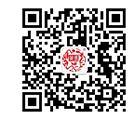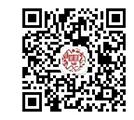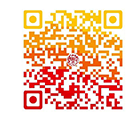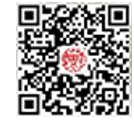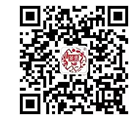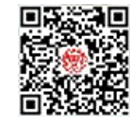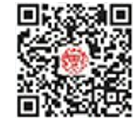Specification for Translation Service
Specification for Translation Service
Introduction
Cooperation between the translation service provider and its client is the basis for providing quality translation services. Before entering into a contract for such services, each party should fully understand the expectations of the other party. This standard defines relevant requirements with a view to protecting the interests of the parties concerned. This standard establishes an objective basis for quality and avoiding post-service disputes.
Management of the work process on the side of the translation service provider is an effective guarantee for quality translation. This standard lays out provisions on each step: making service arrangements, pre-translation preparation, translating, revising, proofreading, editing, final checking, getting client feedback, files management as well as on matters concerning liabilities and confidentiality. The translation service provider is required to improve its management of the entire translation process and to establish an adequate quality control and service system.
This standard has made reference to DIN2345 and includes similar provisions appropriate to the Chinese context. This standard has made no provisions specific to the services of freelance translators. It is not applicable to interpreters either, for the management of interpretation services is markedly different from that of translation services.
GB/T 19363.1-2003
Specification for Translation Service--Part 1: Translation
1 Scope
This standard specifies the process of translation services and translation services specifications.
This standard applies to translation services (translation) business, but does not include interpretation services.
2 Normative references
The provisions in following documents become the provisions of this standard through reference in this standard. For dated references, the subsequent amendments (excluding corrigenda) or revisions do not apply to this standard, however, the parties who reach an agreement based on this standard are encouraged to study if the latest versions of these documents are applicable. For undated references, the latest editions of the referenced documents are applicable.
GB/T 788-1999 Formats and their sizes of books and magazines (neq ISO 6716: 1983)
GB/T 3259 Pinyin spelling of names of Chinese books
GB/T 19000-2000 Quality management systems - Fundamentals and vocabulary (idt ISO 9000:2000)
3 Terms and definitions
3.1 Translation services
The paid business activities that provide conversion services of two or more
languages to clients.
3.2 Translation service provider
The economic entities or agencies who are able to execute translation services and have certain qualifications.
3.3 Client
The organizations or individuals who receive the products. [GB/T 19000-2000, 3.3.5]
3.4 Source language
3.5 Target language
3.6 Translation
To translate the source language to the written target language.
3.7 Original
The carrier that records the source language.
3.8 Draft translation
The semi-finished product of which the translation has been completed but not reviewed yet.
3.9 Finished translation
The final finished product that is provided to client.
3.10 Process
A set of interrelated or interacting activities which transforms inputs into outputs. [GB/T 19000-2000, 3.4.1]
3.11 Traceability
The ability to verify the history, location, or application of an item. [GB/T 19000-2000, 3.5.4]
3.12 Correction
The action to eliminate the cause of a detected nonconformity. [GB/T 19000-2000, 3.6.6]
3.13 Corrective action
The action to eliminate the cause of a detected nonconformity or other undesirable situation. [GB/T 19000-2000, 3.6.5]
4 Requirements
4.1 The translation service provider
4.1.1 The ability to understand the source text and translate it into target text and the human resources to complete the project commissioned by the clients.
4.1.2 Experience in translating the source text into professional target text.
4.1.3 Technical equipment and office facilities.
4.1.4 The ability to fulfil a contract.
4.2 Service arrangements
4.2.1 Premises
Premises are spacious, bright and clean, and facilities are available.
4.2.2 Receptionists
Receptionists shall be familiar with the translation process, service scope, charging standard, time limit and other aspects. Receptionists shall also dress properly, and answer clients’ questions politely and patiently.
4.2.3 Type of services and their descriptions
4.2.3.1 Retail business is the small translation business which takes a short time. The following details shall be recorded including:
— Clients’ full names;
— Clients’ contact information;
— The source and target languages;
— The translation purpose;
— Word counting method agreed by both sides;
— Charges agreed by both sides;
— Time limit;
— Specifications and quality requirements for the finished translation;
— Professional and special terminologies (if provided);
— Accurate title of the translation;
— Prepaid translation charges;
— Number of pages of the source text and the references;
— Marks of the finished translation (as detailed in 4.3), etc.
The record sheet shall be confirmed and signed by clients.
4.2.3.2 Batch or long-term business is the major translation business which takes a long time. A contract or agreement shall be signed. In addition to some provisions of 4.2.3.1, the contract or agreement shall also include the following items:
— Clients’ full names;
— Clients’ contact information (telephone, mobile phone, fax, address, postcode, e-mail, etc.);
— Translation service contents (language, project and time limit) agreed by both sides;
— Delivery model agreed by both sides;
— Inspection clause agreed by both sides;
— Quality assurance agreed by both sides
— Confidentiality clause agreed by both sides;
— Contents related to charges (word counting method, unit price, word count of charts, etc.) agreed by both sides;
— Payment terms agreed by both sides;
— Arbitration of translation quality dispute agreed by both sides;
— Default and disclaimer clauses agreed by both sides;
— Change method agreed by both sides;
— Others.
4.2.4 Other issues
4.2.4.1 Additional services
If clients want to get additional services, they shall consult with translation service-providers. Additional services include:
— Compilation of professional terminologies;
— Graphic design (including pictures, formulas and tables);
— Drawing processing (word filling, scaling, etc. of drawings larger than A3);
— Layout processing;
— Format preparation and printing;
— Others.
Note: Additional services shall be separately charged.
4.2.4.2 Signature
It shall comply with provisions of the relevant national copyright and signature laws and regulations.
4.2.4.3 Needs of the client
Translation service providers shall consult clients about the usage scope and objects, so as to provide better translation services.
4.2.4.4 Background information and technical terms
If necessary, clients shall provide the corresponding materials and supports, such as:
— Professional literature;
— Professional terminologies;
— Paraphrase of difficult-words and abbreviation table;
— Relevant text;
— Background information;
— Appointed special software;
— Visiting sites or physical objects;
— Contact persons who are able to answer questions.
4.2.4.5 Word counting method
Word counting is generally based on Chinese. When neither the source language nor the target language is Chinese, the word counting method shall be decided by clients and translation service providers.
— Word counting according to layout: count words according to actual text. That is, count by multiplying the word-number of each line of the layout by all actual line-number; for those that are less than one-line or the subject-lines, count as one line;
— Word counting according to computer: based on the counting of word processing software, it usually adopts "number of characters (excluding space)”.
4.3 Traceability marks
Each set of materials shall be identified by unique traceable marks through means such as numbers, letters and others. It shall include one or several following elements:
— Sequence serial number;
— Batch;
— Date;
— Quantity (number of pages, specifications);
— Language;
— Client code.
4.4 Management of translation services
4.4.1 Original documents and work arrangement
4.4.1.1 Original documents
As for original documents arrangement, the translation service provider shall:
— sort the original documents, and check for missing pages and illegible printing. If any, the translation service provider shall notify the clients who are required to provide and supplement. If the client cannot provide clear original documents, pencils or other tools whose marks can be removed shall be used to note the unclear contents in the original documents.
— keep the original documents safe. No loss, stain or damage is allowed. Copies shall be used instead of the original documents during translation.
4.4.1.2 Work arrangement
According to clients’ requirements, translation process and task schedule shall be worked out. Qualified translators and reviewers shall be appointed to implement the plan.
4.4.2 Translation
4.4.2.1 Translator
Translators shall meet the following requirements:
— A recognized foreign language proficiency certificate or equivalent certificate, in particular, professional certificate;
— General and professional work experience;
— Expertise;
— Retraining and continuing education.
4.4.2.2 Pre-translation preparation
Translators shall carefully complete the following work before translation:
— Reviewing the source text;
— Having a professional knowledge involved in the source text and all the helpful reference books;
— Reviewing the terms that have been mastered;
— Reviewing the terms provided by clients;
— Reviewing and sorting the materials provided by clients;
— Further looking up words and professional terminologies (by means such as the Internet and databases);
— Solving content-related, professional and terminological problems on the premise of confidentiality with the help of translation service providers and clients.
4.4.2.3 Consistency in the finished translation
Translation shall be complete, and its content and terminologies shall be mostly accurate. Original footnotes, attachments, tables, lists, reports, charts, and the corresponding full text shall be translated and reflected in the translation. No mistranslation, lack of translation, omission or skipping translation is allowed. Questionable parts of the translation shall be noted. Except as otherwise provided by clients.
4.4.2.4 Symbols, measurements, units, formulas and equations
The finished translation shall be in line with the general expression in target language.
4.4.2.5 Proper names, names of natural persons, titles, occupation names and official ranks
— Normally, names can remain untranslated except those of artists, politicians, historical figures, institutions, organizations, animals, plants, buildings, products, literary, art and scientific works, places, and other ones with conventional translations. If necessary, the source text in brackets can be used for easy understanding when the name first appears. When rendering Chinese names into other languages, translators shall use standard pinyin;
— As for titles, occupation names and official ranks, it all depends. If necessary, the source text in brackets can be used for easy understanding when they first appear. When rendering Chinese into other languages, reference to official publications shall be considered.
— When rendering foreign addresses and names into Chinese, the source text shall be directly quoted, and conversely, reference to regulations and standards of relevant countries shall be considered.
4.4.2.6 Dates
Dates shall be translated in accordance with standards of the target language. The Gregorian calendar is generally adapted.
4.4.2.7 New words
As for words without conventional translations, translators shall render them after discussions with clients. New words shall be explicitly marked up.
4.4.2.8 Word consistency
The proprietary vocabulary in the finished translation shall be consistent.
4.4.3 Revising
Reviewer qualification
See 4.4.2.1
4.4.3.2 Requirements for reviewers
Revising shall be carried out according to originals (copies) and draft translation, and reviewers shall unify the proprietary vocabulary according to the context.
Reviewers shall carefully review the names, data, formulas, quantities, and units. After the finished translation is reviewed, it shall be accurate in content and fluent in writing. Reviewers shall use obvious identifications that are different from those used in translation, so as to distinguish one from another.
4.4.4.3 Contents for review:
Reviewers shall consider:
— If the draft translation is complete;
— If the contents and terminologies are accurate, and if the text function meets needs;
— If the grammar and figure of speech are correct, and If the language usage is appropriate;
— If it complies with the client’s agreement about the quality of finished translation;
— If the translator’s notes are appropriate;
— If the formats, punctuations, and symbols of the draft translation are correct.
Note: Decide the number of revising according to the usage, agreed with clients, of the finished translation.
4.4.4 Editing
Translation editing work is mainly a process of reprocessing according to the format of originals, so as to make the breadth, layout, format, font, spelling of finished translation to meet requirements of GB/T 788-1999. The layout of finished translation shall be beautiful, elegant, and compact; the chart shall be arranged in order, corresponding to the original, and complete in chapters and sections. Editors shall use obvious identifications that are different from those used in translation and revising, so as to distinguish one from another.
4.4.5 Proofreading
Proofreading shall be carried out after revising according to typescripts. No error or omission is allowed. If any, proofreaders shall fill out erratum carefully, submit them to relevant personnel for correction, and check them again.
4.4.6 Final checking
Final checking shall be carried out according to the source text and in accordance with client requirements.
4.4.7 Printing and photocopy
Printing and photocopy shall meet client requirements.
4.5 Quality guarantee
4.5.1 The quality guarantee period is six months calculated from the delivery date of the finished translation.
During the quality guarantee period, translation service providers can take the following measures against few errors and omissions in the eligible finished translation:
a) correcting the electronic manuscript;
b) preparing the erratum of the photocopy.
Note: Except changes caused by clients.
4.5.2 Serious quality problems in the finished translation delivered by the translation service provider shall be solved in accordance with the contract. See 4.2.3.2
4.6 Document filling and others
4.6.1 After finishing translation, translation service providers shall keep the copies, draft translation, draft review, typescripts, samples and other relevant documents for at least 12 months.
These documents shall be clearly marked up, complete in content, easy to look up; if they are stored in computers, a backup shall be created.
Translation service providers shall give the originals back to clients and keep records.
4.6.2 Under exceptional circumstances, the originals, finished translation and other relevant paper or electronic documents shall be given back at the request of clients after finishing translation.
Note: In this case, translation service providers shall not bear the responsibility described under 4.5.
4.7 Client feedback and quality monitoring
Translation service providers shall designate a person to register and organize client’s feedback and suggestions, and take corrections or corrective measures against the feedback and suggestions for rectifications. Translation service providers shall reply to all feedback and suggestions from clients.
For batch-business clients, translation service providers shall also perform the preliminary, mid-term, and late-term quality monitoring and interviews, and timely rectify the problems feedbacked by clients.
4.8 Confidentiality
Translation service providers shall safeguard the clients’ business and technical secrets according to relevant laws and regulations, and must not disclose the clients’ business or technical secrets to any third party.
4.9 Declaration of compliance
Each translation service provider can voluntarily perform the provisions of this standard, and self-declare that he is providing the translation services in accordance with this standard (declaration of compliance).

